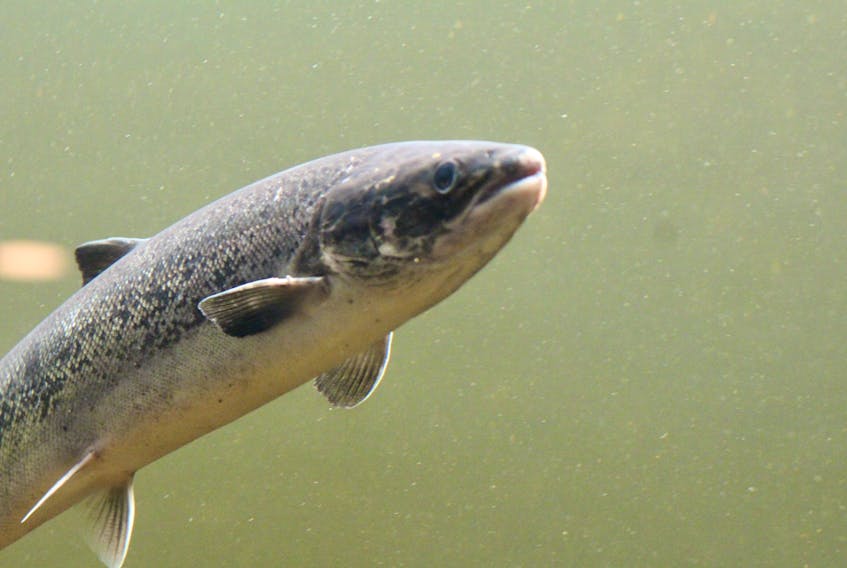Plans in the works for an expansion to the Indian Head Salmon Smolt Hatchery located near Port Harmon in Stephenville have got the go-ahead, but not without a number of conditions.
Northern Harvest Smolt Ltd. applied to Municipal Affairs and Environment to carry out the expansion, which provides smolts to the licensed sea cages that belong to Northern Harvest Sea Farms.
Northern Harvest Smolt submitted documents to the provincial government to modernize and expand its hatchery facility in Stephenville, including a land-based production facility comprised of the latest in recirculation technology and allow Northern Harvest Sea Farms to fully utilize its licensed marine sites.
Related stories:
Potential impact on wild salmon not included in hatchery expansion proposal: ASF
Expansion of Indian Head Salmon Smolt Hatchery undergoing environmental assessment
As part of the expansion, there will be more tanks at the facility to grow the smolt larger and introduce them to salt water before they are shipped off. The industry is now using larger smolt and by bringing salt water in to the operation in Stephenville, it creates an environment in the hatchery for the fish to be larger and better fit to transition from fresh to seawater.
The estimated cost of the work in Stephenville will be about $51 million, which will involve more sophisticated technology, employment in the building phases and more long term employment once the expansion goes into operation.
Meanwhile, the Atlantic Salmon Federation says it believes the proposal by Northern Harvest Smolt Ltd. to expand its Indian Head Atlantic salmon hatchery in Stephenville cannot legally proceed through the environmental assessment process in its current form.
In a Telegram story, Dr. Stephen Sutton, the federation’s co-ordinator of community outreach and engagement, stated in a letter to the Department of Municipal Affairs and Environment that the undertaking includes expansion of farming activities in the marine environment, activities he said are known to have significant negative impacts on wild Atlantic salmon and the surrounding environment.
He said despite describing the hatchery expansion in detail, the proponent has failed to describe any aspects of the expansion of the marine component of their operations and to him appears to be a deliberate attempt to avoid having their plans for expanded marine farming subjected to the scientific and public scrutiny of an environmental assessment.
Project conditions:
The proponent shall complete a hydro-geologic assessment of the proposed groundwater source. This assessment shall be carried out by a qualified hydro-geologic professional and submitted to the Minister of Municipal Affairs and Environment for approval. Reports on the progress of this assessment are required to be submitted to the Water Resource Management Division every two months until the assessment is complete and accepted by the Minister of Municipal Affairs and Environment.
The proponent shall implement a groundwater monitoring program to monitor water levels and water quality. The program must be developed with and meet the approval of the Minister of Municipal Affairs and Environment within two months from this release date. Water level data shall be collected continuously using a recording data logger, and selected water quality parameters will be monitored and annual reports submitted to this department for review for a period of at least two years. Extension of the monitoring and reporting beyond two years will be at the discretion of the Minister of Municipal Affairs and Environment.
The proponent will be required to enter into a Memorandum of Understanding with the Department of Municipal Affairs and Environment for the installation of a real time water quality and quantity monitoring network to monitor water levels and selected water quality parameters within two months from this release date. The type, number and location of the stations required will depend on site conditions and final operation plans. The proponent is to bear all costs associated with the groundwater monitoring network and installation, operation, and maintenance.
The proponent shall provide proof of a minimum $1,000,000 surety bond or guaranteed letter of credit from a recognized lending institution, to be held as financial security should the hydrological assessment and groundwater monitoring, including real-time monitoring, not be completed and as per the release condition.
The proponent must demonstrate that waste from the hatchery can be managed in a manner that meets the approval of the Department of Municipal Affairs and Environment, by submitting a comprehensive Waste Management Plan prior to the commencement of hatchery operations.
A women’s employment plan for this project shall be submitted for the approval of the Women’s Policy Office within one month from this release date. During the tendering process, contracted companies must be informed that a women’s employment plan for the project must be submitted as a requirement of successful bidding.
The proponent must submit clarification on the full-time status of occupations associated with the construction phase, as well as hiring arrangements for all occupations associated with the operations phase to the Department of Advanced Education, Skills and Labour within one month from this release date.
The proponent must complete a pathogen profile of the saltwater source to ensure biosecurity of the hatchery. This profile must be determined and reviewed by the Department of Fisheries and Land Resources and the company veterinarian prior to the commencement of hatchery operations.
A health and safety plan is required if any excavation is going to take place in subsurface soil (below one meter depth) in the areas of identified or potential contamination. In addition, the proponent shall make workers aware of the contamination and require they wear personnel protective equipment to minimize potential exposure to contaminants.
Source: Municipal Affairs and Environment








